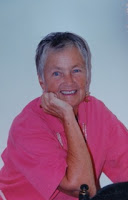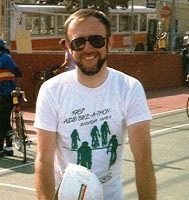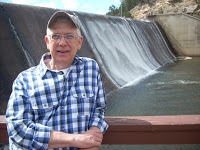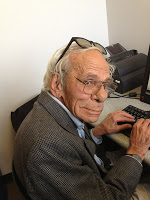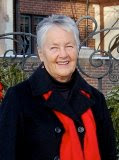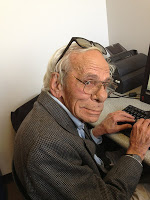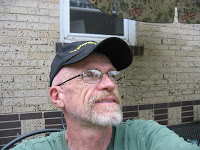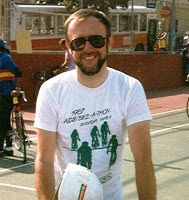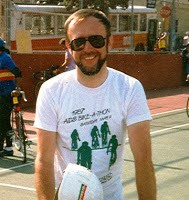For what reason I do not know, but this topic brings to mind images from my childhood. We can all remember being outside in the dark of night, lying on the ground on our backs looking up at the stars. If you look at a group of stars long enough, they start to dance. At least they look as if they are dancing-jumping from here to there in a very lively fashion. Of course we know the stars are not dancing, rather our eyes or brains are playing tricks on us. But I felt that vision from the past deserved space on this page.
Another image from childhood relates to dancing, but certainly not with any stars. In about the 6th grade in my homogeneous, non-diversified community of Mt Lakes, New Jersey, a suburban very small enclave within commuting distance of New York City, most of the boys and girls in my class at school were enrolled into dancing classes at the local community church.
The dances that were taught were the fox trot, the waltz, the rhumba, and the jitterbug. This was about 1946. Perhaps our parents’ motivation for sending us to dancing school included their belief that young children should be distracted from the news reports coming out of Europe in the aftermath of the 2nd world war revealing the horrors and the reality of the conflict.
More likely our parents sent us to dancing school not so much to learn to dance well, but to prepare us to enter the social world and to learn the proper decorum and social graces needed for high school years and beyond. Anyway, it was the thing to do and all my friends attended with me on those Saturday afternoons.
This was strictly ballroom dancing of course. So equal numbers of girls and boys were needed. My partners usually were Tom Brackin and Mousey MacMillan. STARS—they were not. I preferred Tom to Mousey, but somehow I always ended up with Mousey. I never did know what his real name was……
During college and early adulthood I mostly danced with the man I eventually married and who was the father of my three children. I can’t call it dancing as I think back on it, however. It was more like a shuffling of the feet, in place, more or less, or not at all, in time with the slow, dreamy music while in a bear hug type embrace. As for the jitterbug neither one of us ever felt confident enough to do it in public in spite of the dancing lessons of earlier years.
During the two decades of raising my children, I don’t think I danced much at all. I probably didn’t even think about it. So there was a huge gap of time between the pre marriage dancing and entering the world of dancing that the lesbian bars presented.
When I came out, never mind I was middle aged, dancing became very important. I was looking for some stars. If the dance floor was the place to find my star, then on the dance floor was the place to be. In the excitement of finding myself and my new life it seems at first I was somewhat blinded —not by the stars I danced with but by the ones that were in my eyes.
As the next several years raced by I learned a lot, stuff that I had been rather sheltered from in my youth. As a fledgling lesbian, dancing was an important part of my life. This is one of the few places where, I learned, we go to meet women—places where you dance—the Three Sisters, Divine Madness, Ms. C’s.
It was at Divine Madness one night that I did in fact meet the love of my life, the one with whom I would spend the rest of my life. It was not so much the dancing. She had other qualities and characteristics that attracted me. But dancing with her was fun. Thanks to the Mt. Lakes Community Church dance classes and Mousey McMillan, I could be waltzed around the dance floor as long as she was leading and she didn’t mind that I counted under my breath—1,2,3,1,2,3— rather than trying to converse. The conversation could come later after the dance. “This woman is very special,” I thought.
“Can you do the Two-Step?” she asked one Saturday night. She, being a lover of country music was a fan of this lively jig. The only two step I had ever known or heard of was the Aztec Two Step, some unpleasant digestive ailment I picked up while traveling in Mexico one summer.
“I’m not familiar with it,” I said, “but I’m game to try if you lead and don’t mind counting aloud for me if I need help.” Yes, I did need lots of help, but somehow it didn’t matter. I was dancing with a STAR—my star— and we’ve been dancing ever since.
© 23 July 2017
About the Author
Betsy has been active in the GLBT community including PFLAG, the Denver Women’s Chorus, OLOC (Old Lesbians Organizing for Change), and the GLBT Community Center. She has been retired from the human services field for 20 years. Since her retirement, her major activities have included tennis, camping, traveling, teaching skiing as a volunteer instructor with the National Sports Center for the Disabled, reading, writing, and learning. Betsy came out as a lesbian after 25 years of marriage. She has a close relationship with her three children and four grandchildren. Betsy says her greatest and most meaningful enjoyment comes from sharing her life with her partner of 30 years, Gillian Edwards.
